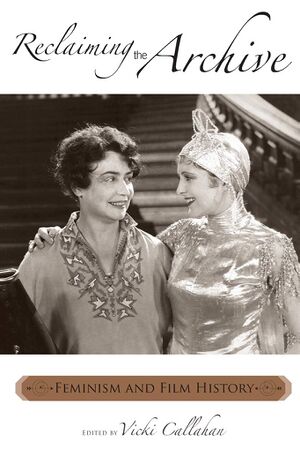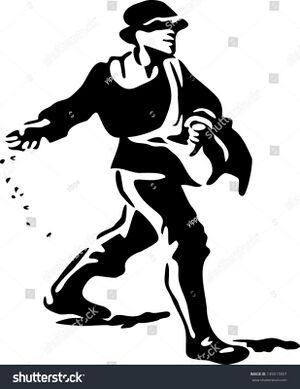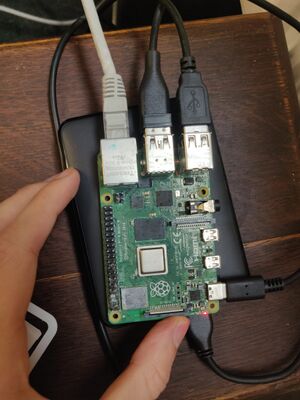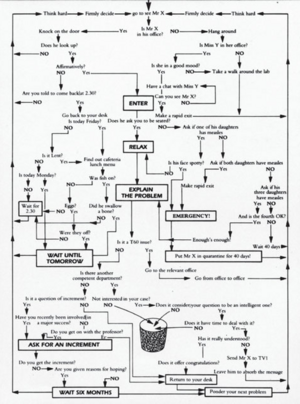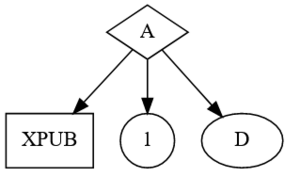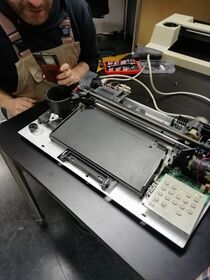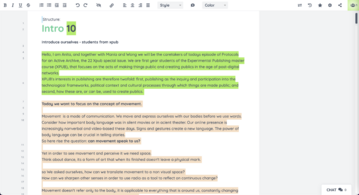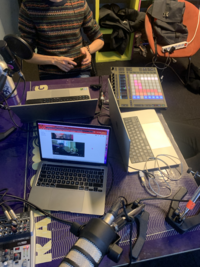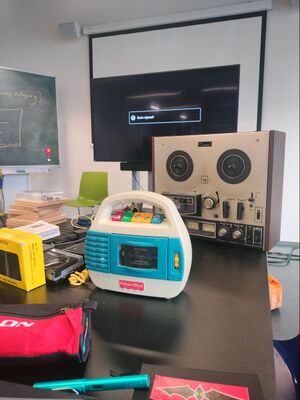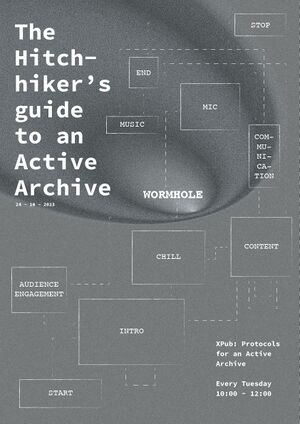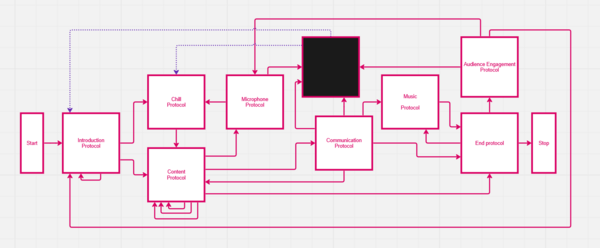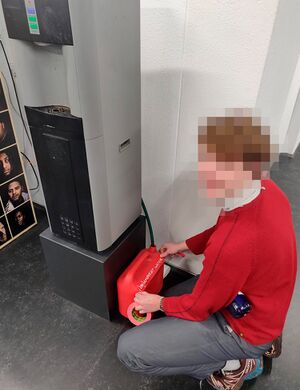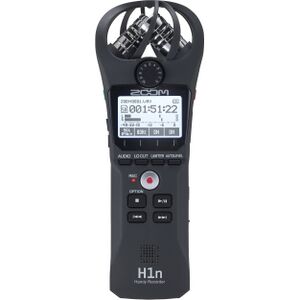Wordhole: Difference between revisions
No edit summary |
|||
| Line 187: | Line 187: | ||
==[[Healing penplotters (Wordhole)| Healing penplotters]]== | ==[[Healing penplotters (Wordhole)| Healing penplotters]]== | ||
{{:Healing penplotters (Wordhole)}}) | |||
==[[Homophily]]== | ==[[Homophily]]== | ||
Revision as of 16:30, 1 November 2023
Back to base: https://pad.xpub.nl/p/Wed-11-Oct23
This page contains a glossary created in the XPUB 2023-2024 Special Issue 'Protocols for an Active Archive'.
Accessibility
Analog
Archive
Websters Dictionary :
1: a place in which public records or historical materials (such as documents) are preserved an archive of historical manuscripts also : the material preserved —often used in plural: "reading through the archives"
2: a repository or collection especially of information as verb: "She archived her e-mail messages in a folder on her hard drive."
Application (how we use it)
There has not yet been a shared definition of what an archive is, but datasets, libraries and collections have been mentioned in correlation to it.
See: ARCHIVE FEVER: A FREUDIAN IMPRESSION by JACQUES DERRIDA https://sites.duke.edu/vms565s_01_f2014/files/2014/08/DerridaPrenowitz1995fragment.pdf
Active Archive
Annotation
Aporee
Audacity
1. A willingness to take bold risks.
2. The name of a software package which records sound and manipulates sound recordings.
Application (as used by us)
to make recordings for Worm radio broadcasts
See also: field recording
Authorship
Audience Interaction
As part of the project Radio Worm: Protocols for an Active Archive, there is also interaction with a public and thus an audience. On the one hand, the audience consists of people who, for example, listen to our radio programmes (by chance), but at the same time it also consists of ourselves when we become listeners to our own programme. We interact with an audience when we talk about the project with acquaintances and/or strangers. What do we tell in these moments? Is there repetition in what we tell and how we tell it?
Extensions to this definition:
- include examples of ...
- ... radio shows with and without audience interaction (go specific)
- ... include the purpose / goal of audience interaction
- clear out specific situations in which audience interacts (one-way/two-way/no-way)
- invite reader to interact with this wikipage (as (un)specific as we want) -> link to Thijs Wiki game
Brainstorming
Definition
A technique that involves the spontaneous exchange of ideas from members of the group to find a conclusion for a specific problem.
Application (as used by us)
How do we brainstorm:
- Visualizing our goal
- Documenting the discussion
- Thinking aloud
- Encouraging every idea
- Collaborating instead of criticizing
- Asking questions
See also: Visual mapping
Breakfast lab
Broadcasting
Oxford Dictionary: /ˈbrɔːdˌkɑːstɪŋ/
noun
1. the transmission of programmes or information by radio or television. "the state monopoly on broadcasting"
Choose Your Own Adventure Game
Control Societies
Gilles Deleuze discusses the concept of a society of control in his 1992 text 'Postscript on the Societies of Control'. Societies of control are governed by codes, which give access or bar individuals from flows of information, at "informational intersections" and, as a result, the subject flows “in a continuous network.” Deleuze contrasts control societies with disciplinary societies, as theorised by Foucault, which are governed by the control of discreetly defined spaces through the execution of social protocols. However, control societes, Deleuze argues, are distinct from disciplinary societies (as theorised by Michel Foucault) but in connection to them, as their immediate development after WWII. Control societies are reforming the institutions of disciplinary societies, including prisons, hospitals and schools, but one can go further and think of how eg. genetic engineering or pharmaceutical research is conducted. Reflecting on Foucalt's analysis of disciplinary societies, Deleuze reminds us that subjects in disciplinary societies are constituted on the basis of two axes: 'number' and 'signature', and are tangible and clearly witnesses in our society. These organising principles are of less importance within control societies and instead codes are implemented. Such codes govern who can access what. This is especially evident not only in the end-barrier but in the systems of tracking and actual control that defines whether one qualifies to cross a barrier. Some methods of control, that could have been borrowed from previous societies of sovereignty, are becoming interchangeable. At the time the essay was written, Deleuze could already perceive a crisis of the institutions as new mechanism of controls were being installed and implemented in different types of systems: school, prison, hospital and corporate. The question that arose was how unions would survive the advent of new, harmful forms of societies of control.
Application (as used by us)
Collective Annotation of Postscript on the Societies of Control: https://pad.xpub.nl/p/PostscriptControlSocieties
Subgroup Annotation of Postscript on the Societies of Control: https://pad.xpub.nl/p/Deleuze_Control_Group
Citation: Mentioned in: Deleuze, G., Postscript on the Societies of Control (1992)
Chop Chop
Definition by Wikipedia
"Chop chop" is a phrase first noted in the interaction between Cantonese and English people in British-occupied south China. It spread through Chinese workers at sea and was adopted by British seamen. "Chop chop" means "hurry" and suggests that something should be done now and without delay.
Ref: https://en.wikipedia.org/wiki/Chop_chop_(phrase)
Definition by XPUB Chop Chop is the name we have chosen for our dear Raspberry Pi. This is because we want our server to be quick and do what we want it to do. Chop-chop!!
To discover the contents of Chop Chop go to https://hub.xpub.nl/chopchop/
See also SSH
Code
Oxford dictionary: /kəʊd/noun
1.a system of words, letters, figures, or symbols used to represent others, especially for the purposes of secrecy. "the Americans cracked their diplomatic code"
2. COMPUTING: program instructions.
Copyleft
Copyright
Collaborative
Collaborative Emacs
This entry is borrowed from the Category of Protocols, and describes a protocol first applied in a session where a group of six students wanted to work together on an HTML soundboard.
When collaborating on a project, all kinds of problems can occur. In particular, version conflicts can be difficult to resolve and can be interruptive of a workflow. For this problem (and others), version control systems like Git may be used. (Not needed for this page)
Moreover, while collaborating it might be nice to see each other's changes in real time: a particularly difficult case of version control. To this end, the CRDT datastructure can be used. Several editors have an implementation of CRDT to allow for collaboration.
This page focusses on CRDT collaboration with Emacs. Emacs opens in the terminal, and hence this guide allows for collaborative work live on the server.
Step by step guide
The following is a step by step guide to setting up a collaboration session within Emacs. It assumes the user is in a terminal.
- Connect to chochop:
ssh USERNAME@145.24.139.16(or to any other address you'd want tosshto), press return.- Enter your password, press return.
- Open emacs:
- Enter
emacs. Press return.
- Enter
- IF THIS IS YOUR FIRST TIME COLLABORATING THROUGH EMACS: Install the CRDT package:
- If you are using MacOS, perform the following steps. Otherwise, skip to 3.2
- Go to terminal settings.
- Go to profile.
- Check the box 'Use Option as Meta Key'.
- Close the terminal settings, so that the terminal is in focus again.
- Press
Alt+X(or for MacOSOption+X). - Enter
package-install, press return. - Enter
crdt, press return.
- If you are using MacOS, perform the following steps. Otherwise, skip to 3.2
- IF YOU ARE HOSTING A SESSION:
- Press
Control+X Control+F. - Type in the path for the file you want to share, press return.
- Press
Alt+X. - Type
crdt-share-buffer, press return.
- Press
- IF YOU ARE JOINING A SESSION:
- Press
Alt+X - Use
crdt-connect, press return. - Fill in the open parameters:
- For URL, enter:
localhost:6530. - For Display, enter:
USERNAME. - Press return.
- For URL, enter:
- Select the the file you want to work on:
- Use the arrow keys to move to the file you want to work on.
- Press return.
- Press
You should now be able to collaborate! Should being the operative word.... This works in duos, maybe not in groups of six...
Communication
The word "communication" has its root in the Latin verb "communicare", which means "to share" or "to make common". Communication is usually understood as the transmission of information.
The evolution of human communication took place over a long period of time. Humans evolved from simple hand gestures to the use of spoken language. Most face-to-face communication requires visually reading and following along with the other person, offering gestures in reply, and maintaining eye contact throughout the interaction.
CSS
CSS (or Cascading Style Sheets) is a programming language used to change the styling (color, typography, layout, etc.etc... the limits are almost endless) of web content, by referencing HTML elements using various CSS selectors. Additionally to HTML, CSS specs are maintained my the W3C, but implementation of these specs can deffer per browser (looking at you, Internet explorer).
Example of CSS
body, .bg--red, a:hover {
background-color: red;
}
In this example, the selector selects the <body> element, and any element with the class bg--red, and every link that has a pseudo class of "hover" (mouse over element). The changed property is the background-color of these elements, with a value of red.
Examples of websites that use CSS
Images and links
- CanIUse to check if your CSS property can be used in a specific browser
- W3 specs for CSS
- HTML & CSS; Design & build website by Jon Duckett
See also
Consent
Data
Death of the Author
Text by Roland Barthes, published in 1967. Barthes claims here that the meaning of a text is given not by the author but by the reader. It belongs to a school of literary theory criticism called reader-response criticism with applications not only in literature but in fields such as psychology and philosophy.
Citations
The text has been extensively citated and not always in a good way, as eg. in Jacques Derrida's ironic essay "The Deaths of Roland Barthes".
In context
One of the most well-known applications of this text is critical pedagogy, advocating dialogic learning (letting students arrive to their own conclusions, rather than being fed the meaning of a text).
How we use it
Listen to Xpub reading of Barthes' text
Deconstruction
Cambridge dictionary: The act of breaking something down into its separate parts in order to understand its meaning, especially when this is different from how it was previously understood.
Deconstruction implies "breaking down" something to understand its significance and create new meanings.
Application (as used by us)
- Deconstruction in critical thinking can be used to find something new by breaking the text or taking a concept to pieces. Firstly we deconstruct the archive to be able to activate it. It can generate new meanings through the interpretation, analysis, discussion.
- Decontruction can be used as a form of critique
Application in other contexts (examples) Why does Derrida refuse to define deconstruction? Derrida writes, there is nothing that could be said to be essential to deconstruction in its differential relations with other words. In other words, deconstruction has to be understood in context. This kind of fluidity also prevents the possibility of defining deconstruction.
Decision making process
Destroying the Protocol
was an episode of Radio Worm: Protocols for an Active Archive, broadcast on [date] The broadcast was....
Discussing protocols
We talked a lot about how protocol can make it easier for us to work together and be helpful in making decisions as a group. We tried to establish a system that would be helpful in reading texts together and writing down our reflections and sharing them. Depending on the activities undertaken in the group, new protocols appeared. These include taking notes in etherpad, how effectively we can share observations after listening to a radio show, making sure everyone has a voice, and how to speed up the decision-making process. We also established a hand shake protocol to express consent or disagreement. A breakfast protocol for listening to the radio emerged, but it did not last.
We talked about whether strict adherence to protocols is limiting at some point. One of the groups prepared a radio broadcast titled: destroying protocols. This topic inspired one student, who started to wonder how to gentle the protocol and how to highlight its sensitive sides. This led to a game of love letters from the protocol. Love letters from the protocol are like a kiss on the forehead when you are completely stuck and hopeless. It's like holding your hand when you get lost in the documents you need to fill out.
We questioned, when is it helpful to create strict rules, and when is it more fruitful to not follow them? It's something that's fluid and there's no protocol for it.
Digital
Digital is the representation of physical items or activities through binary code. When used as an adjective, it describes the dominant use of the latest digital technologies to improve organizational processes, improve interactions between people, organizations and things, or make new business models possible. The word digital comes from Latin digitus = finger, which refers to the bit yes/no structure of the information - the finger is either up or down.
Link: https://www.gartner.com/en/information-technology/glossary/digital-2 https://www.oed.com/dictionary/digital_n?tab=meaning_and_use#6774585
Digital(post)
Disciplinary Societies
According to Michel Foucault, disciplinary societies are characterized by a constant passage from closed structure to closed structure, namely from the family to the school to the factory etc. The idea behind a disciplinary society is to group and organize individuals for a more effective distribution of labor.
In Discipline and Punish, Foucault traces the introduction of prisons into society; the movement away from public executions towards carceral systems and several implications of these historical changes. Discipline is closely connected to increasing bureaucracy and the development of biopolitics.
Foucault doesn't fail to mention the way disciplinary societies indirectly shape mentalities that work around their structure, and how rites are developed to protect a sense of self and a sense of pride through niche, anti-authoritarian communities.
Steve's notes on the difference between disciplinary and control societies:
"In Foucault disciplinary society is governed by ‘precepts’ (“texts” establishing protocols of behavior, discipline and social organization) which govern spaces. Society organized through capsularity (sic?): in which specific spaces have specific functions and specific "means of correct training". “In the disciplinary societies one was always starting again (from school to the barracks, from the barracks to the factory)” Each space has its own discourse (specialist language) which regulates them. In Foucault’s discipline society the subject internalizes discipline (becomes subject to the discourse of a given space) in which case re-form is the model (the subject under discipline is re-formed). By contrast: societies of control are governed by code- which give access or bar individuals from flows of information (at "informational intersections"). The subject flows “in a continuous network.”
- Foucault Discipline and Punish
See also: Control Societies (Wordhole)
Exquisite corpse
Exquisite corpse is a method for collectively assembling images or words.
The name originates from the French term cadavre exquis.
It is often executed by one person drawing or writing on a piece of paper, folding it so that a tiny portion of the drawn lines or the last few words are visible, and handing it off to the next person to continue writing or drawing.
In Context
The Exquisite corpse exercise was used in the creation of the fictional narrative for the broadcast episode "Personal Accounts of Irreplaceable Lace: a 200 year old history of Lost and Found".
The protocol for this was as follows:
- The caretakers divided the narrative into past, present and future. Each caretaker taking one tense.
- They all wrote for about 10 minutes, after which they would pass it on clock-wise for the next person to continue writing.
- After each writing cycle of 10 minutes, they would read out what has been written, in order to have some narrative consistency
Distributive
Gilles Deleuze
French philosopher (1925-1995), engaged in metaphysics and epistemology, specifically in issues of identity and difference. He uses the term "virtual" to describe ideas as the conditions of the actual experience. He criticizes the notion of the individual (as he accepts difference as fundamental in all experience). One of his major works (together with Felix Guattari) is Capitalism and Schizophrenia (the title is pretty much self-explanatory).
Context
In his essay "Postscript on the Societies of Control" (1990) Deleuze marks the change in the structure of society and senses the importance of code in the new order.
Marxist philosopher (French, 1925-1995), who engaged in metaphysics and epistemology, specifically in issues of identity and difference. He uses the term "virtual" to describe ideas as the conditions of the actual experience. He criticizes the notion of the individual (as he accepts difference as fundamental in all experience). One of his major works (together with Felix Guattari) is Capitalism and Schizophrenia (the title is pretty much self-explanatory).
In context
In his essay "Postscript on the Societies of Control" (1990) Deleuze marks the change in the structure of society and senses the importance of code in the new order.
Georges Perec
Writer, filmmaker and documentalist (French, 1936-1982). Member of the Oulipo group, a group of writers seeking for patterns and structures that could be used for practicing constrained writing. One of his major projects was in effect producing and working with a writing algorithm, (also using flowcharts).
In context
An example of his practice can be seen in "The Machine". For the full experience, it can be best accompanied by its reading.
See also
Glossary
Oxford Dictionary: glossary/ˈɡlɒs(ə)ri/
noun
an alphabetical list of words relating to a specific subject, text, or dialect, with explanations; a brief dictionary. "a glossary of Inuktitut words"
Flowchart
This is an entry for 'Flowchart' for the Wordhole Glossary.
Definitions
- A diagram of the sequence of movements or actions of people or things involved in a complex system or activity. (From Oxford Languages)
- '[A flowchart] consists of a certain number of propositions that can take either yes or no for an answer, each answer having certain consequences. The concatenation of causes and effects and the choice of answers are represented by arrows that are the only syntactic connectors between the propositions. In brief, it is a tree structure, a network, a labyrinth, and the “reader” chooses ONE route among all the possible routes, the totality of possible routes being presented SIMULTANEOUSLY on the flowchart.' (From Mainframe Experimentalism, chapter 2)
Application (as used by us)
Flowcharts have been used to present different questions about archives, see pad of 2023-10-10.
Mentioned in
Mainframe Experimentalism, chapter 2
In context
'A flowchart [...] shows simultaneously all the steps and the order of their recursion in a set of instructions. It also contains within it all the possible moves allowed by the algorithm.' (From Mainframe Experimentalism, chapter 2)
Images and links
The Art of Asking your Boss for a Raise
See also
George Perec, Graphviz
Graphviz
This is an entry for 'Graphviz' for the Wordhole Glossary.
Definitions
- Graphviz is a package of open source tools initiated by AT&T Labs Research for graph visualization. The name is a stylized contraction of 'graph visualisation software', i.e. software that provides a way of representing structural information as diagrams of abstract graphs and networks. It uses DOT Lanugage scripts. (From Graphviz and Wikipedia)
Application (as used by us)
Graphviz has been used to create graphs, for example in an attempt to visualize different questions on archives (see pad of 2023-10-10).
Application (other contexts)
See https://en.wikipedia.org/wiki/Graphviz#Applications_that_use_Graphviz.
In context
- 'I have used Graphviz to visualize the connections between the items of the glossary on this special issue.'
Example
digraph D {
A [label="Hello" shape=diamond]
B [label="XPUB" shape=box]
C [label="1" shape=circle]
A -> B
A -> C
A -> D
}
Images and links
See also
GREP
A command-line utility for searching in plain-text data sets for patterns (eg. for regular expressions). It can be a powerful tool (alone or even better along other commands, for finding and handling elements in a text or list.
In context
The function of this command-line is so important that it has entered the Oxford English Dictionary (2003) both as a verb and noun. (Famous phrase: "You can't grep dead trees", referring to physical data)
Link
https://man7.org/linux/man-pages/man1/grep.1.html
Fish
Fiction Writing
Fictioning or fiction writing has been utilised as tool in activating the archive of Radio Worm. The tool includes but is not limited to: world-building, character-making, narrative structure, speculation, imagining and sonic fiction. Collective fictioning requires common ground and concensus.
Execution of fictioning in the radio broadcasts: This has been done most prominently in two broadcasts "Hitchhikers guide to an Active Archive" and "Personal Accounts of Irreplaceable Lace: a 200 year old history of Lost and Found". Both broadcasts had elements of both textual and sonic world-building and established characters or roles to tell a narrative.
"Hitchhikers guide to an Active Archive" was a non-linear choose-your-own adventure game that featured audience interaction as a quintessential part of a radio broadcast. All three of the radio makers took on roles (Navigator, Protocoler, Performer) and made use of repetitive sonic and textual elements, sharing the narrative structure through protocols presented on a flowchart and a textual wiki version of the narrative.
While "Personal Accounts of Irreplaceable Lace: a 200 year old history of Lost and Found" was a linear fictional story of archivists over the course of 2 centuries who archive through (fictional) mediums. The broadcast was tangentially inspired by the method of critical fabulation, formulated by academic and writer Saidiya Hartman. Critical fabulation is a writing method which combines archival records with fictional writing and critical theory in order to make sense of the blanks and cracks in historical narrative.
See also: Exquisite corpse exercise, Saidiya Hartman, Choose-your-own adventure, Critical Fabulation, The Hitchhiker's Guide to an Active Archive
Fediverse
On Wednesday 26/10/2023, Lídia introduced us shortly to the "Fediverse" during methods class. The Fediverse is a network of open source social networks, which can all communicate with each other.
Historically, (social) web platforms are closed off. When posting a video on Youtube, one can only access the video via this specific platform, and not using their own application of choice. This restriction is addressed within the Fediverse via the ActivityPub Protocol. Applications that are part of the Fediverse have all implemented (a version of) the ActivityPub Protocol, allowing applications to communicate with each other.
Well known (to this author) examples of Fediverse are Mastadon, Nextcloud, and as of this month (October) even Wordpress is part of the Fediverse![1]
Even though the protocol has been long in the making, I've seen the word ActivityPub pop up more and more this year, as bigger platforms are joining the Fediverse. Question is, how will Meta and other big companies treat the Fediverse?
“Podcasting is the analogy, right?” he says. “The end of every podcast ever is, you know, ‘subscribe to us on Spotify, iTunes, or your favorite app.’ And the reason people say it is because podcasting is a protocol, not a company. And because it’s an open protocol, you can take your podcasts and leave.” Anil Dash, the head of Glitch at Fastly [2]
But what about authorship and therefore ownership in the Fediverse? Platforms have always been hesitant in taking ownership about content on their platform, but and in the Fediverse this might get more complicated. There is a nice RadioLab episode that somewhat relates to this.
Funny sidenote is that the online spellcheck used to spell check this entry, did not know the term "Fediverse", "Mastadon" or "Nextcloud", but it did know about "Wordpress" and "Youtube".
Have you tried turning it on and off again?
Definition from Wikipedia
Quote from the show The IT Crowd (2006–2013), a British comedy written by Graham Linehan. The comedy follows Jen, Moss, and Roy and their work in the IT department, based in the basement of Reynholm Industries.
The scene script it comes from:
Roy Trenneman: [picking up the phone] Hello, IT. Have you tried turning it off and on again? Uh... okay, well, the button on the side, is it glowing? Yeah, you need to turn it on... uh, the button turns it on... yeah, you do know how a button works don't you? No, not on clothes.
Definition (as used by xpub1)
A joke used while working with many different machines that may or may not include an on/off button. Not everyone is familiar with the origin of the joke, but it is commonly known as the most basic question asked in relation to working with technology/getting a machine to work. It has become a sort of meme, a cultural memory of working with technology.
Variations can include: Have you tried refreshing the page?, Have you tried turning it on and off again again?
Citation, Mentioned in
- Prototyping class with Manetta. Manetta (paraphrased): If your computer does not register the plotter, type in exit() to leave chiplotle, turn off and on the plotter, and run chiplotle again
- Colloquially it will be mentioned by everyone studying XPUB in one point or another
Images and links:
- https://www.youtube.com/watch?v=nn2FB1P_Mn8 (The scene from IT Crowd)
- https://knowyourmeme.com/photos/362738 Know your Meme archived image for Have you tried turning it on and off again?
See also: Pen Plotter
HTML
Healing penplotters
or destroying them, as you prefer.
Penplotters are incredible high precision pieces of technology that nobody cares about anymore, common back in the 70’s and 80’s to draw blueprints, charts, schemes... Luckily XPUB exist to regain control over these lost machines!
Healing penplotters is one of the main focus of XPUB during the first trimester '23. Some of us participated in few evening meetings organised by Joseph. 🚧The process is still ongoing 🚧
It was extremely exciting to play a bit, finally, with some physical/material practice of fixing hardwares. We got our hands dusty as we tried to find solutions to some technical issues, some of them were fixed some others are still undergoing investigation.
We focused on decoding online/offline manuals of those plotters we got (HP7475 A3, BBC Goertz Metrawatt SE-283, TAXAN X-Y KPL710...), then studying a bit the penplotter language (hpgl). We started inspecting the machines, then soldeing DB9 and DB25 connectors and pin them to the pen plotters.
After that the real disassembly of these graphic robots happened, so lot of screwing and unscrewing, cleaning, we had to 3dprint some part of the pen plotters that were broken (wheel mechanisms), we fixed cables and motors (someone could help with the techical terminology here (人´∀`) ).
It's interesting how we didn't get trapped in the apparent rigid, static, structure of the penplotters, we ranged more creatively in the use of different materials, pens, to create various types of outcomes. We got lot of good ideas.
It's important to accept it will take time to fix and find solutions to some issues of the machines, and that's the exciting part (so, one of the main aspect of this experience is the patience practicing).
Our goal is to let the penplotters become easy accessible tools for everyone in the studio, effortlessly connected to chopchop as well. Until now we produced zines, personal and collective works, radio show experimentations. We worked together??? We failed together??? We had fun???)
Homophily
Homophily is the assumption that "birds of a feather flock together". In sociology, it has been presented as a principle to express love of the same (or similar), it is rooted in the belief that people connect to similar individuals more frequently. However, in the text "Queering Homophily", written by Wendy Hui Kyong Chun, this belief is questioned and criticized. The author writes that homophily is used as the building block of network sciences, creating pathways that discriminate based on patterns of presumed similarity. This leads to detrimental consequences which standardize people into uniformity, connecting people into "neighbourhoods" of sameness, that promote lack of variety and monotony. Homophily, according to Chun, is used as an excuse to perpetuate racism, sexism and inequality, by posing it as a biological fact of human nature.
Interview
a structured conversation where one participant asks questions, and the other provides answers. In common parlance, the word "interview" refers to a one-on-one conversation between an interviewer and an interviewee. The interviewer asks questions to which the interviewee responds, usually providing information. That information may be used or provided to other audiences immediately or later. Interviews can be unstructured, free-wheeling and open-ended conversations without predetermined plan or prearranged questions. Interviews can also be highly structured conversations in which specific questions occur in a specified order. They can follow diverse formats.
[Noun.]
1: a formal consultation usually to evaluate qualifications (as of a prospective student or employee)
2: a: a meeting at which information is obtained (as by a reporter, television commentator, or pollster) from a person b: a report or reproduction of information so obtained
[Verb.]
1. transitive : to question or talk with (someone) to get information : to conduct an interview with (someone)
2 .intransitive : to participate in an interview for a position (such as a job)
Link: https://en.wikipedia.org/wiki/Interview https://www.merriam-webster.com/dictionary/interview?src=search-dict-hed
Microphones
A microphone is a device that amplifies sound. There are three (or four) types of microphones:
(a) The dynamic microphone
(b) The small and large diaphragm microphone
(c) The ribbon microphone
and they have six different polar patterns: (cardioid, supercardioid, hypercardioid, omnidirectional, lobar and bidirectional), depending on where they capture the sound from, and they are accordingly used for different environments and specific purposes, eg. public speaking, recording in a noisy environment, recording for film, online streaming.
In context
We have experimented with different types of microphones (and from different eras) their effect and the quality of their output when used for recording.
Memory
Negotiate Collaboration
Negotiate Collaboration
There are 5 steps and practices that consistently work. The model presented here identifies the five stages of any negotiation in a simplified framework that helps you to analyze and absorb. Collaborative negotiations are an ongoing process, which build confidence, trust and strong relationships.
Negotiate Collaboration Practices in SI22
- Discuss how to collaborate practices with others, sharing the best/worst experiences, personal preferences and feelings about it. Also talk about the difficulties of collaborations in a large group.
- How to distribute different tasks to people. Is it possible we could all focus on one project?
Difference between collaborative and distributed practices. (a) collaborative: moving towards a more unified outcome (b) distributive: sharing of methods, people are free to produce individual outcomes
- Small group collaboration practice in Radio Worm.
Learn how to do the team work and make an experimental radio show.
- Zine camp group distribution:
Zine/ Radio/ Presentation/ Marketing/ Retails team
Oscilloscope
An oscilloscope used to be primarily an instrument for measuring voltage. Its useful graphic rendering of waveform allowed the analysis of properties such as amplitude, frequency, distortion etc.
Application
Oscilloscopes are used for the maintenance of electronic equipment in various fields, such as engineering, biomedical sciences, the automotive industry etc.
In context
The oscilloscope's hidden talent lies in making art, as it can be used to render .svg images that can then be manipulated through sound, something that we practiced extensively.
Pad
This is an entry for 'Pad' for the Wordhole Glossary.
Definition
- Shortening of '(an) EtherPad', an open source online editor providing real-time collaborative editing (From etherpad.org).
- A thick piece of soft material, typically used to protect or shape something, or to absorb liquid. (From Oxford Languages)
- The fleshy underpart of an animal's foot or of a human finger. (From Oxford Languages)
- Fill or cover (something) with soft material in order to protect it or its contents, make it more comfortable, or give it a particular shape. (From Oxford Languages)
- Lengthen a speech, piece of writing, etc. with unnecessary material. (From Oxford Languages)
Application (as used by us)
We often use EtherPads for collaborative work, note taking and documenting purposes. With 'a pad', we refer to any one pad. Never is 'pad' used in reference to the software EtherPad itself.
Application (other contexts)
The word 'pad' has seen multifunctional use, both as a verb and a noun, for centuries. The reference to 'EtherPad' is only more recent, with the software being launched in 2008.
In context
- 'Do we have a Pad of the Day?'
- 'Don't pad out your answer to make it seem impressive' (From Oxford Languages)
Images and links
- EtherPad website: https://etherpad.org/
- Main wiki entry on EtherPad: https://pzwiki.wdka.nl/mediadesign/Etherpad
- Wiki entry on the EtherPatches project: https://pzwiki.wdka.nl/mediadesign/EtherPatches
Pad of the Day
This is an entry for 'Pad of the Day' for the Wordhole Glossary.
Definition
- Used in reference to any specific day's associated main EtherPad.
Application (as used by us)
Most days, XPUB students use a day-specific EtherPad to work collaboratively, take notes, document their process, and more. On the associated day, any of these is referred to as 'the pad of the day'. Not to be be confused with any of the other (often many) pads that may be used that day, the pad of the day serves as the common thread throughout the day.
In context
- 'Where can I find a link to the Pad of the Day?'
Images and links
- Example of a Pad of the Day (2023-10-11): https://pad.xpub.nl/p/Wed-11-Oct23
- Example of a Pad of the Day gone wrong (2023-11-07)
See also
Performative
Definition from Sources (Merriam-Webster)
- relating to or marked by public, often artistic performance
- disapproving: made or done for show (as to bolster one's own image or make a positive impression on others)
- determined and reinforced by the repeated performance of socially prescribed acts and behaviors rather than by biological factors
- grammar: being or relating to an expression (such as a word or statement) that performs the act it specifies or that effects a transaction
Application (as used by us)
Application (In other contexts)
In How to do Things With Words. John Langshaw Austin introduces the idea of performative speech acts. Austin argues that to deliver a 'performative utterance' is to 'do something' rather than simply to report or 'state something' (Austin, 1975). Saying "I do" in the context of a wedding ceremony is an example of performative utterance given by Austin.
In Context
- 'Truly performative, [the artwork] simultaneously does something (it runs and produces output) and it states something (through both its output and its code)' (Ledesma, 2015, p.93).
- 'Codeworks can potentially be executed and thus become performative' (Arns, 2005, p.8).
Citation: Mentioned in:
- Austin, J.L. (1975) How to Do Things with Words: Second Edition. 2nd edition. Edited by J.O. Urmson and M. Sbisà. Cambridge, Mass: Harvard University Press.
- Arns, I. (2005) ‘Code as performative speech act’, Artnodes, 0(4). Available at: https://doi.org/10.7238/a.v0i4.727.
- Butler, J. (2006) Gender trouble: feminism and the subversion of identity. New York: Routledge (Routledge classics).
- Culler, J: Philosophy and Literature: The Fortunes of the Performative (2000) https://www.researchgate.net/publication/240740399_Philosophy_and_Literature_The_Fortunes_of_the_Performative
- Galloway, J. Protocol: How Control Exists After Decentralisation (2004) https://www.asounder.org/resources/galloway_protocol.pdf
- Ledesma, E. (2015) ‘The Poetics and Politics of Computer Code in Latin America: Codework, Code Art, and Live Coding’, Revista de Estudios Hispánicos, 49(1), pp. 91–120. Available at: https://doi.org/10.1353/rvs.2015.0016.
See also
Live Coding | Performance
Podcast
Prescriptive Technology
The term is used in Ursula Franklin's lecture The Real World of Technology, in which "prescriptive technologies" oppose "holistic technologies".
Example: a form of "prescriptive technology" was used in Chinese bronze casting in 1200 BCE. The production required the skills of model makers, clay workers; metal workers, each of which had a specific set of tools and disciplines. This specialism represented a division of labour. Franklin makes the point that the workers naturalized their activities, so it was assumed there was only one procedure to make clay molds or work with metal.
Application (as used by us)
The “internalization” of a subject position (and of a discourse) engendered by prescriptive technology relates to Foucault's disciplinary societies and Deleuze's control societies. In a Marxist reading, "prescriptive technologies” operate at the level of ideology (they are disguised in plain sight).
Preparations for radio
Preparing for radio is important in making me feel less nervous about live performing.
In the two times i have been a caretaker (Week 2 - 5 Rythms and Week 6 - Hitchhikers Guide to an Active Archive) the preparations were different but still shared some common elements that were crucial in the development of the show. Both times, we started working by thinking about a structure or a "main theme" for the broadcast, and then worked around that. This structure helped in maintaining one common thread of thought in 2h long slots filled with a large variety of content.
For both we took upon roles, in the first one more implicitly and in the second one more explicitly. This made it so that workload was distributed in the preparation as well as the execution.
We sourced content to play in the show and wrote scripts on different collaborative platforms (first show pad, second show wiki). We prepared a musical background. We rehearsed parts of the show before Tuesday. We went to Worm earlier to set up our computers, test the audio and made sure we were recording. We decided to eat a cake as a reward and then started.
For even more information about the planning and script of the broadcast Hitchhiker's Guide to an Active Archive go to Hitchhiker's Guide to an Active Archive
Reel to Reel Experimentation
Process
(a) A team comes together and has a reel-to-reel tape recorder and at least one tape at its disposal.
(b) The team listens to the tape in order to test if it's still in working condition. Other reasons to listen are plain curiosity or in order to choose pieces the team would like to keep and integrate in a new recording. For example in one case it was a militaristic anthem, in another an aria, in a promising Joan Baez recording there was nothing, as the tape had been demagnetized.
(c) The team might choose to record directly on top of the tape or proceed first to step (d) and then record. Recording takes place directly through microphone(s) and its speed can be manually adjusted by pulling the tape or holding and releasing, or even speeding up or slowing down the movement of the casing while the tape rolls.
(d) The team members proceed to cutting the tape as needed, using a razor on a slicing plate, and then reconnect the tape pieces with special tape.
(e) The last step is to play the new tape (or indeed the loops) created and make adjustments where needed.
(f) The result can be further recorded using a cassette tape recorder or digital means.
Purpose
Explore the possibilities of physical tape and the potential crossing with digital media.
Shell scripts
Throughout SI #22: Radio Worm - Protocols for an Active Archive, several shell scripts have been made. These are small computer programmes which enhance productivity and make tasks less repetitive. On several occasions we have implemented shell scripts to get things done and probably we will use shell scripts again in the near future. In 'Tools to Fight Boredom: FLOSS and GNU/Linux for artists working in the field of generative music and software art' Marloes de Valk likens shell scripts to a sort of 'glue' capable of binding things together. Throughout SI #22 shell scripts have been used to diverse ends. This ranges from making a podcast generator to downloading files from the internet. From compiling pdf documents with pandoc and weasyprint to manipulating texts with grep, awk and sed. These scripts can be found on the internet via Gitea, on the Wiki and in etherpads. Overall, shell scripting has been more of a distributive practice than a collaborative practice. We have shared algorithms with each other without necessarily writing those algorithms together (i.e. in an Etherpad). Depending on how the shell script is written, a specific shell may or may not be required to execute the code. Primarily we have been using bash, the Bourne Again Shell, and fish, the Friendly Interactive Shell. These shells have subtle differences in syntax; bash often cannot execute fish scripts and vice-versa. Below is an example of a fish script which, when executed, downloads all episodes of the Laurence Rassel Show.
#! /usr/bin/fish
for n in 01 02 03 04 05 06 07 08 09 (seq 10 17);
wget (printf 'http://www.publicrec.org/archive/2-01/2-01-014/2-01-014-%s.mp3' $n);
end
Structurelessness
Without structure
Application (as used by us)
The Tyranny of Structurelessness (1970-73) is a text by Jo Freeman
THE TYRANNY of STRUCTURELESSNESS (1970-73) is an article by Jo Freeman aka Joreen. The discussion of structureless in this article is based on the 'organizational form of the movement'. According to the text, "Structurelessness" is a natural response to an overly structured society, however it is organizationally impossible. Not only we can not decide whether to have a formally structured group, but also whether to have one that is structured or not. A structureless group does not exist, despite our desire to think otherwise. Any kind of group of people will eventually organize itself in some way if they come together for any kind of purpose.
The word structure is derived from the Latin structura, which means "a fitting together, building.". In a broader sense its anything put together. The relationships between family members make up a family's structure, and the way your muscles and bones fit together might be considered your body's structure.
It's a challenge to paraphrase something that doesn't seem to work nor make 'sense' because the idea of having no structure is more a theoretical ideology than it is something practical to realize (?), which makes it difficult to realize, because there will be a structure based on that there isn't a structure. So then a counter-structure (alternative) makes more sense than having no structure at all(!?!)
However, contrary to the concept, it has gone from being a concept to a tool for the elite to grab power.
Secretorial Labour
In Context
Secretorial labour has many different name and takes on several forms (only a portion of them have been listed here):
- Extensive note taking of group meetings
- Taking minutes
- Doing live transcription of conversation
It is done as an act of care towards a group which is collaborating. It offers a history of group meetings and ideas, which can be used both by present and absent members of the group, and serves as a language aid for those of us who struggle following group conversations.
See also: Live Transcription
Text Manipulation
Through the works of Georges Perec and Simon Yuill as well as the experimentation with bash commands, such as grep, sed and awk, and the introduction to weasyprint, a wonderful opportunity arose for making a prototype based on a collaborative pad, from which lines containing keywords were selected, cut and rearranged in order to create a text with free associations.
The desire for distributive practices led further to the inclusion of a "recipe" in the printed version of this prototype, so that others could not just reproduce but pick up the basic idea and expand it further according to their own texts and focus.
Applications
From very functional ones (such as finding specific content in a text) to more abstract and creative ones (creating texts with a literary and/or poetic flair, the possibilities that text manipulation offers are seemingly endless.
The Hitchhiker's Guide to an Active Archive
The Hitchhiker's Guide to an Active Archive is an interactive radio play that was performed live by XPUB students Rosa, Anita and Thijs and broadcast on Radio Worm on 2023-10-24. They each voiced one of the three voices present in the script.
During the broadcast, a pad was used as the channel of communication between the Caretakers / performers of the show, and the audience. There was room for open interaction, and the story includes multiple forms of decision making (polls, dicerolls and time requirements) by the audience to navigate the non-linear script. The non-linearity is captured in a flowchart that was provided to listeners of the show.
The show could be recreated using the associated wiki pages and a fresh channel of communication (e.g. another EtherPad).
See also: Flowchart, Pad, Performative, Worm
Tape Vandalism
Reflection on leaving traces
One of the changes that come with starting a new study, is operating in new physical spaces. familiarizing oneself with the people, facilities and quirks of these spaces can offer a plethora of insights, questions, discussions and moments. Thus a great potential as source of inspiration.
One of the spaces at the PZI-institute at the 4th floor of the WDKA, that people tend to gravitate towards is the so-called "cantina". A strange pseudo-room that houses some relaxing furniture, a coffe-machine and a water machine. If one is to closely inspect the water machine, one can see that it offer multiple modes of water. You have the blue bottom at the top, which dispenses refreshing cold water. Under this button are two more ambiguous green buttons, with and instruction "~press both green buttons for ambient water".
The term "ambient water" has sparked many discussions and humorous moments, as it seems like a possibly poor translation has given the water machine a lot of personality.
Another more recently discovered feature of the fountain of ambience, is a red plastic can(the kind used to carry fuel). The can interfaces with the water-machine through a hose (the kind you´d see in a garden). In other terms its some sort of disposal for byproducts of "the production of drinking water" (Probably collection condensed water from the machines internal cooling). As a humoristic gesture a piece of red tape with the words "(Un)Ambient water was attached", a homage to the water-machine that serves us all with vital water.
Adding personal touches to the spaces is a way of activating and vitalizing the space. It can offer insights and raise questions on how communities are built and operate. It can be a way of spreading (dis)information through posters, flyers and other communicative media. It can also be a form of activism, raising attention to urgent topics or events.
Voting by Show of Hands
Voting by show of hands is a protocol established within the first weeks of Special Issue 22, and has been applied in the process of naming chopchop, among others. This Wordhole entry is borrowed from the Category on Protocols.
Voting by show of hands is an accessible social protocol that can be used to make group decisions.
Procedure
All options are presented to the voters in order. This order might be predetermined or randomly chosen. For each option, each party elligible to vote has three options:
- Raising their hands: this inditaces support of the option.
- Lowering their hands: this indicates rejection of the option.
- Neither raising nor lowering their hands: this indicates neither support nor rejection of the option. In some cases, this might be interpreted as being neutral on the option. In other cases, it might mean the user refrains from voting on the option, and in doing so forfeit their right to appeal the decision.
One round of voting might be followed by more. A new round may be planned before the first round, or be initiated by no option having seen enough support by the voters to be chosen over the others.
To find consensus, it is used to see if people disagree or have concerns about a particular decision. In this case, these concerns can be formulated and discussed until a full group consensus can be reached.
The show of hands can also be used in group discussions when participants agree or disagree with an opinion without interrupting the speaker.
Characteristics
This protocol is characterised by its accessibility: no additional equipment (e.g. ballots) are required in the procedure of voting. If voting is done publicly, it does not require a neutral party to count the votes. In this case, however, it does not provide anonimity to the voters.
Wiki Wandering
The Wiki is a shared, public space also used by XPUB students and staff based on the MediaWiki architecture. Wiki Wandering, for me, refers to the practise of exploring the Wiki, getting lost, getting unlost, creating pages, being surprised by what is or was there, getting (un)lost again, and editing your way out of there. Not necessarily in that order. Note that this 'wandering' refers not to contributing to the Wiki, but rather to be captivated by the Wiki, and maybe contribute in reaction to it.
Wiki Wandering has seen several uses already. In our practises of documentation, the Wiki is one: we have created Wiki entries for our protocols (e.g. personal protocols and caretaker protocols), projects (e.g. Platform is the Problem and EtherPatches), diaries, ... This specific documenting practise seems to have been in place for many years in XPUB now. This enables the circular narrative when exploring the Wiki that is at the heart of Wiki Wandering. It transforms the experience of the Wiki from a static space to an ever evolving one, in which its internal infrastructure reacts to and builds on itself. A result of this can be a self-sustaining practise: exploration leads to motivation leads to creation.
Wiki Wandering is not an explicit practise. Students were encouraged, but never instructed, to explore and use the Wiki in a way fitting to them, The practise of Wiki Wandering might continue to evolve. By nature of the Wiki, what is there will remain there, and every part that is there can serve as a starting point for a new part to be there. This can, in turn, affect the way we're exploring the Wiki, which can in turn affect the way we're using the Wiki.
An explicit example of Wiki Wandering was given by Steve in the 2023-11-01 Methods class when he described getting lost in a rabbit hole of working on the Wordhole glossary.
Worm
Definitions
noun 1. any of a number of creeping or burrowing invertebrate animals with long, slender soft bodies and no limbs.
verb 2. move with difficulty by crawling or wriggling. insinuate one's way into.
3. In the context of Xpub we would refer to the cultural space of Worm Rotterdam: WORM is the ultimate test environment for alternative art production, experimental ways of living and non-academic knowledge development. We are a network organisation at the intersection of (popular) culture and (performing) arts, fueled by an abiding interest in all the inspiring, beautiful, urgent, vital, raw, unruly and / or crazy shit that our fellow human beings come up with. We do not see the chaos that comes with it as a problem; rather we use it as energy for action.
Application
1. "eeew there is a worm in my apple!"
2. "I wormed my way along the roadside ditch"
3. "Hey wanna grab a drink at worm later, we can have look at the radio studio"
Links
Read more about Worm Rotterdam´s project here:
https://worm.org/about/organisatie/
Zoom Recorder
A Zoom recorder is a field recorder produced by the brand Zoom. A field recorder is a piece of portable equipment used to capture ambient sound. A device that we (XPUB1) have used to record sounds around us, e.g. a morning at worm/field recordings used in the radio broadcast/interviews for the broadcast, etc.


